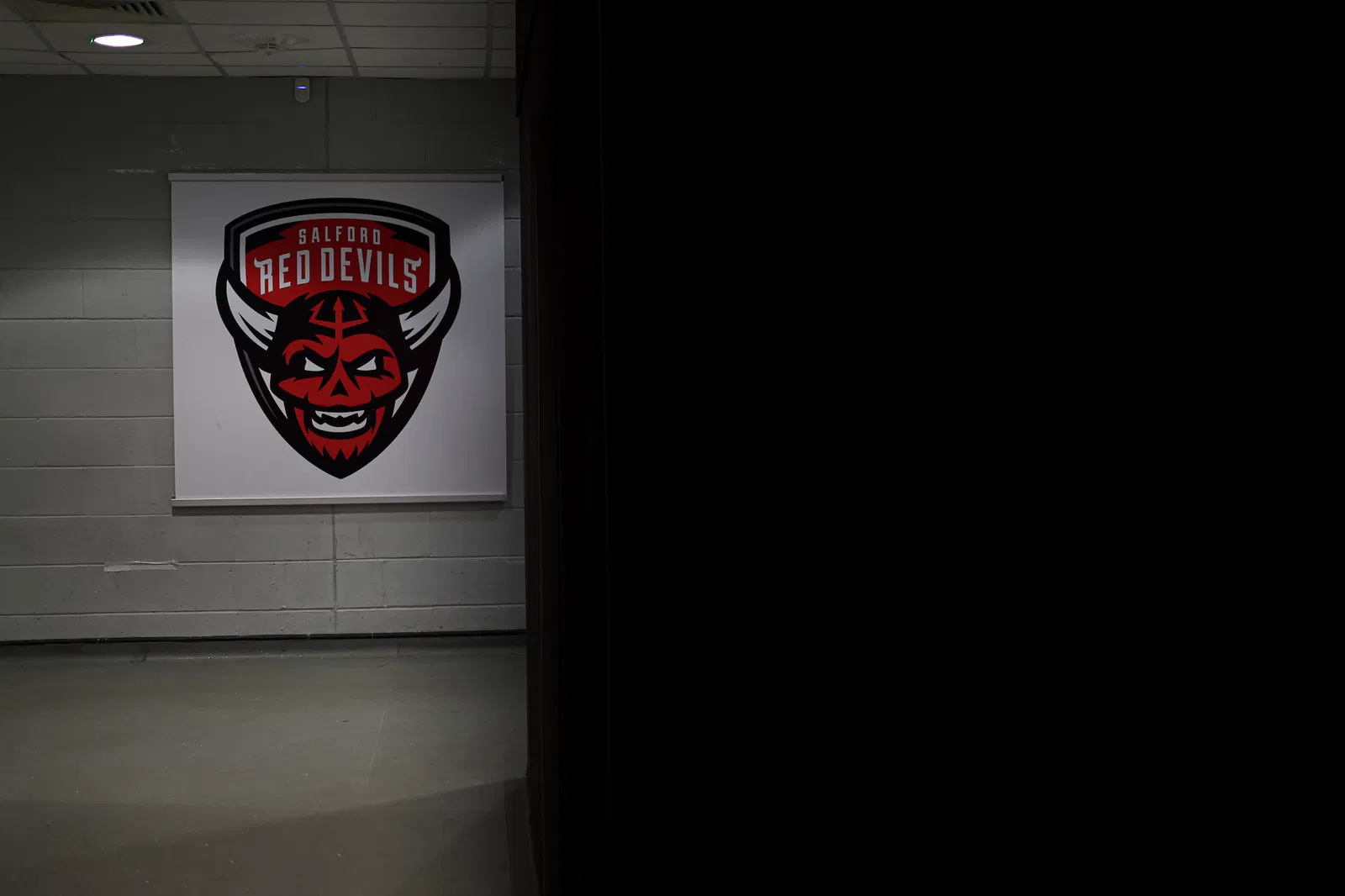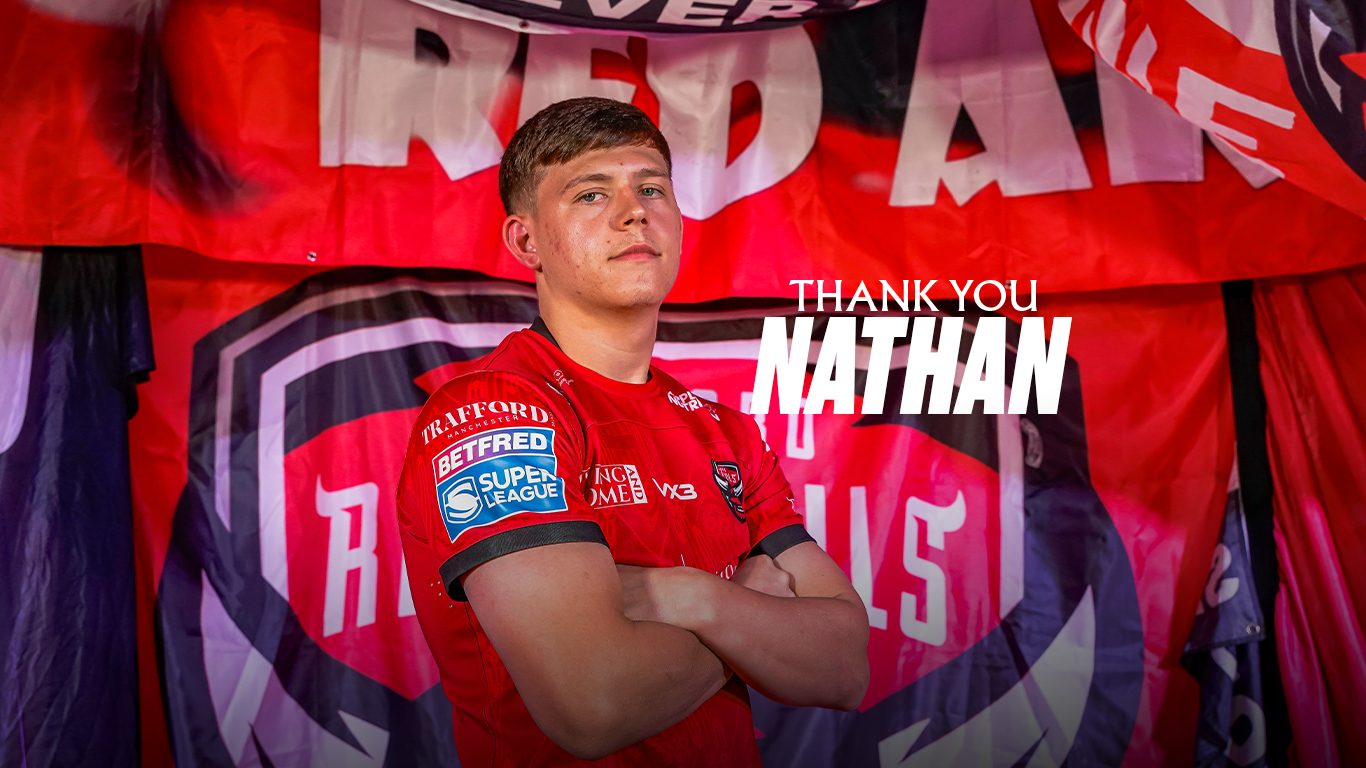CONTENTS
Part 1 – His Early Rugby League Career
Part 2 – His Playing Days At The Willows
Part 3 – His Teammates And Coaches
Part 4 – His Post Salford Career In The Game
Part 1 – His Early Rugby League Career
Native of the resolute rugby league town of Widnes, it was in the early seventies that hard-working forward, Doug Davies, made the giant leap upward in his playing career to join the illustrious Red Devils from one of the minnows of that era, the now defunct Huyton, formerly known as Liverpool City and prior to that, among others, Liverpool Stanley.
Doug had indeed been born in Liverpool, but had grown up in Widnes following his family’s move there, when he was aged five. The most significant thing about that move was that it opened the door to his being involved with rugby league, because the school he attended played rugby, only.
The first club to benefit from this was local amateur club St Ambrose, from where, in 1959, he was snapped up by Warrington. Surprising as this might appear for a Widnesian to be consorting with their local rivals, it becomes rather less so when he explains that the Wires coach at that time was, himself born and bred in Widnes.
“It was a shock really because I was only sixteen, and no less a person than Ces Mountford came to my house to offer me the option of going there. I was signed on amateur forms as a loose forward, which was my established position, and later on was selected there for Lancashire, because of my tackling. I could go into a tackle and then get quickly out of it, to be ready for the next one.
“I stayed with Warrington for two full seasons, and played around ten games in the reserves, before moving to my home-town team, Widnes, as a professional, in 1961, to play in their ‘A’ team. With only a couple of exceptions, we were all just local lads, and because of that we had a great time and made a good team together. I even have a couple of medals I won with them.”
In 1965, he went down under to Australia, when the offer to continue his trade as a top-grade welder there proved to be too good to turn down, though his commitments with Widnes put a considerable obstacle in the way of his rugby league career.
“That was a little disappointing for me, particularly when there was a bit of interest from Australian teams who would like to have signed me. There were other compensations in the money, and the lifestyle there, however. I even worked in a French Foreign Legion gaol, putting in a sprinkler system.”
It was not until the end of 1967 that he returned to the UK, where Widnes, readily and promptly, accepted him back into the fold, not with the reserves but straight into the first team, where, not for the first time, having played around twenty matches prior to his sabbatical spell, he proceeded to hold down the loose forward position, for the following three years.
A badly broken leg, which side-lined him for some considerable time, brought his time with the Chemics to its termination, with his requiring up to five months in plaster to enable the healing process to be successfully completed.
“It caused me to lose some of my pace, which was noticeable even in training, and so I wasn’t getting into the team at all. Joe Egan, one of my teammates advised me to find a lower club in order to help me regain my form, which I did with Huyton.”
The former Liverpool City club happened to be going through what was probably its most successful period of all, at that time, having left their Knotty Ash ground, and moved to the brand new Alt Park Stadium under their new name. The team consisted of, like himself, a group of former Widnes, St Helens, and Warrington lads all of whom gelled well together and produced a good atmosphere around the club.






